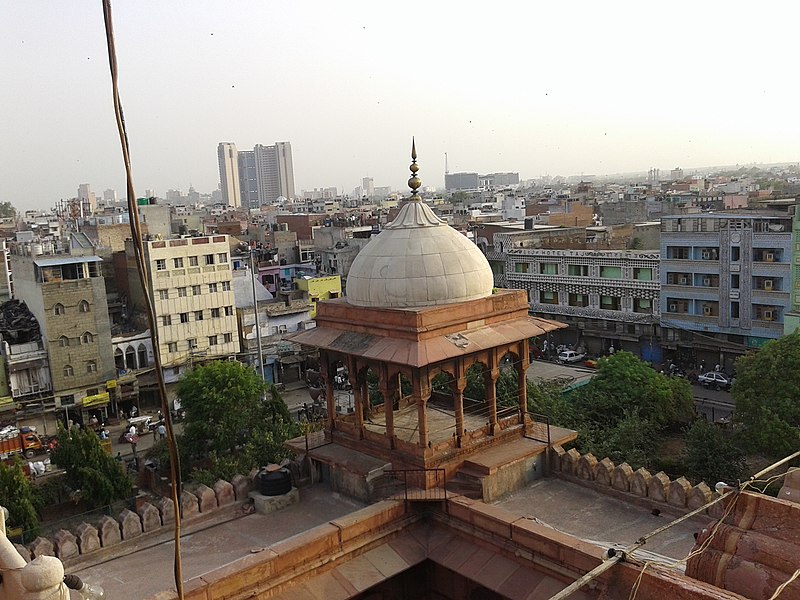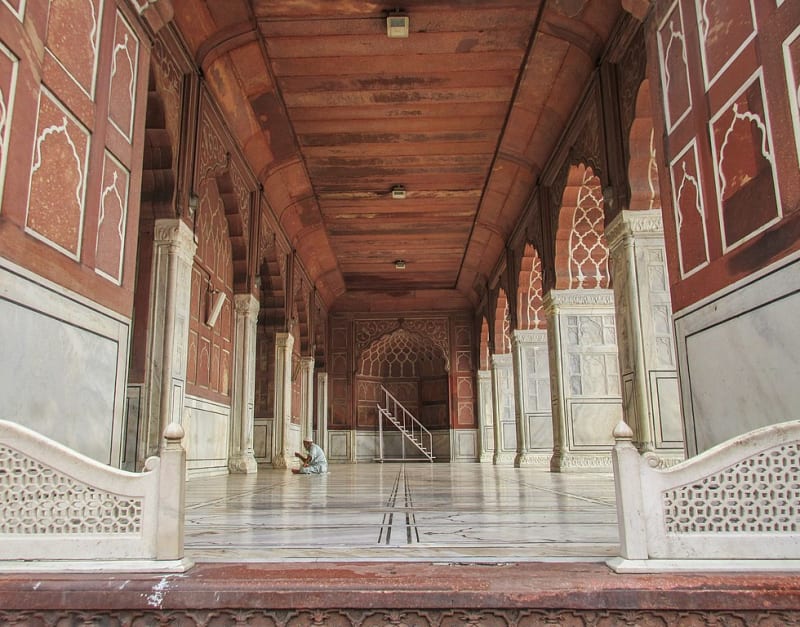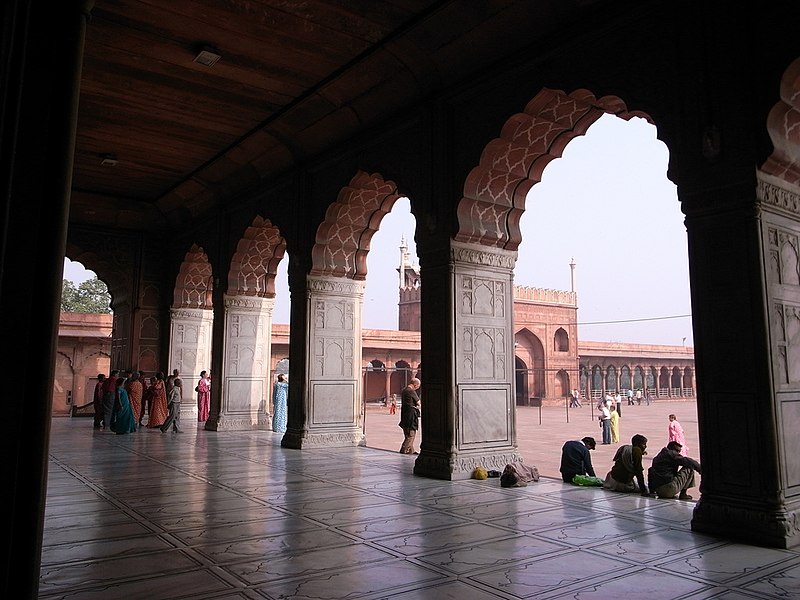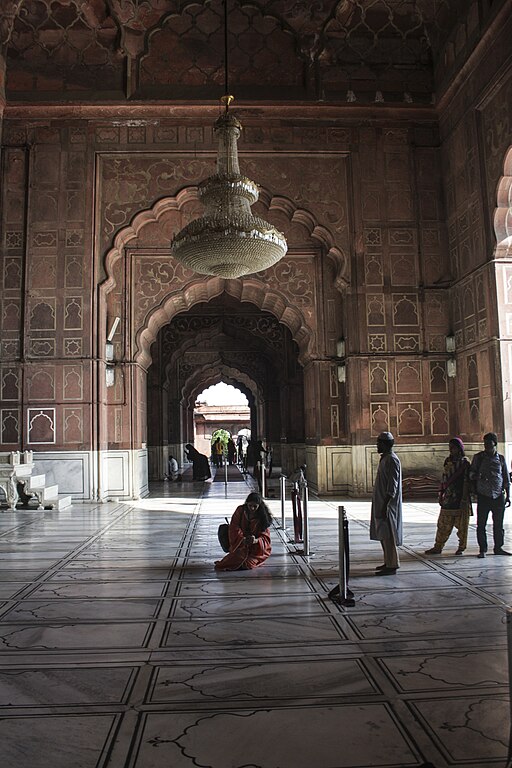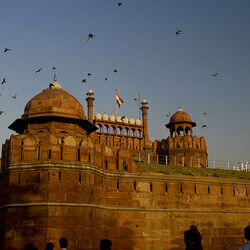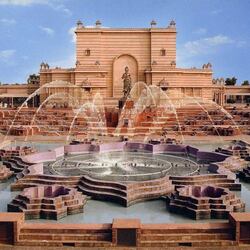Jama Masjid
The Delhi Cathedral Mosque is considered one of the largest in India. Located in the old districts of Delhi. The full name is Masjid-i-Jahan-Numa – "Reflecting the World Mosque". Its other name, Jama Masjid, which means "Friday prayer," is more well–known. Impressive in its size, it is a majestic and beautiful historical monument that is still in use today. The temple is made in the architectural style of the Great Mughals.

Construction began in 1644 and was completed in 1656. The famous Shah Jahan built the Jama Masjid mosque, which gave the world the legendary Taj Mahal and the Red Fort. The ruler built the Taj Mahal Mausoleum palace as a sign of great love and is dedicated to his wife, and the mosque was built in honor of their daughter Jahanara Begam. More than 5,000 people have been building a huge structure for 8 years.
In 1857, the British colonialists suppressed the uprising and seized the Jama Masjid mosque. Initially, they even wanted to demolish it to punish and frighten the residents. Fearing a new wave of protests, they limited themselves to placing soldiers in the mosque building. The building of the madrasah, located on the south side of the temple, was nevertheless destroyed by the British.
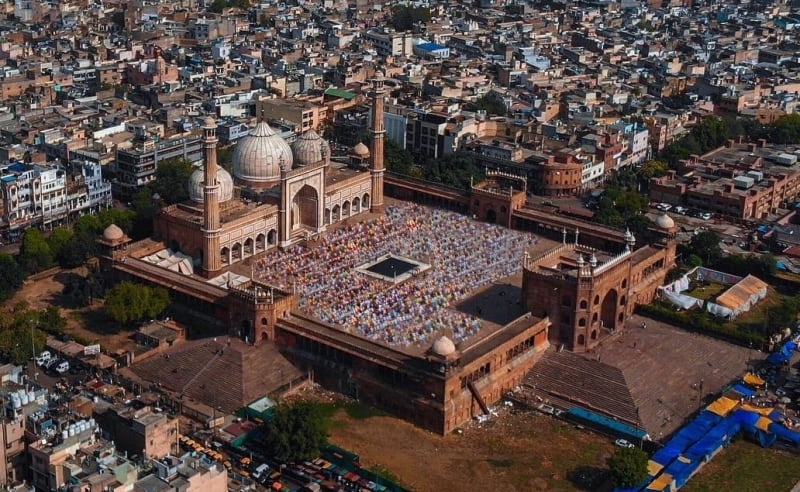
The architecture of the Jama Masjid
The Jama Masjid is surrounded by high red sandstone walls, with a tower in each of the 4 corners. The temple courtyard can be accessed from three sides by climbing the steps and passing through the gate. The southern and northern ones are always open. The third, the eastern ones, were intended for rulers and imperial persons. Now they are being opened for everyone on Fridays and holidays.
There is a huge square in front of the mosque, which accommodates 25,000 parishioners. A gallery consisting of numerous arches runs along the perimeter of the walls from above. There is a baptismal font in the courtyard.
The Jama Masjid Mosque is dominated by 8 domes lined with white and purple marble stripes. There are two 40-meter minarets on the sides. The walls of the minarets are built of red sandstone and white marble, which alternate with vertical stripes. Tourists are allowed to climb up only the southern minaret via a steep spiral staircase with 130 steps. The tower offers a magnificent view of Delhi. The floor inside the mosque is made of marble with black and white ornaments. For convenience, the floor is divided into 899 squares, the size of a prayer mat.
The inner structure of the north gate houses an ancient handwritten Quran, the pages of which are made of deer skin. It is believed that the manuscript was dictated by the Prophet Muhammad himself. Among other Islamic relics, the mosque houses Muhammad's slipper, a stone impression of his foot, and hair from his beard.
Before entering the Jama Masjid mosque, everyone takes off their shoes and puts on special prayer clothes. During prayer, people of other faiths are not allowed to enter the mosque.
